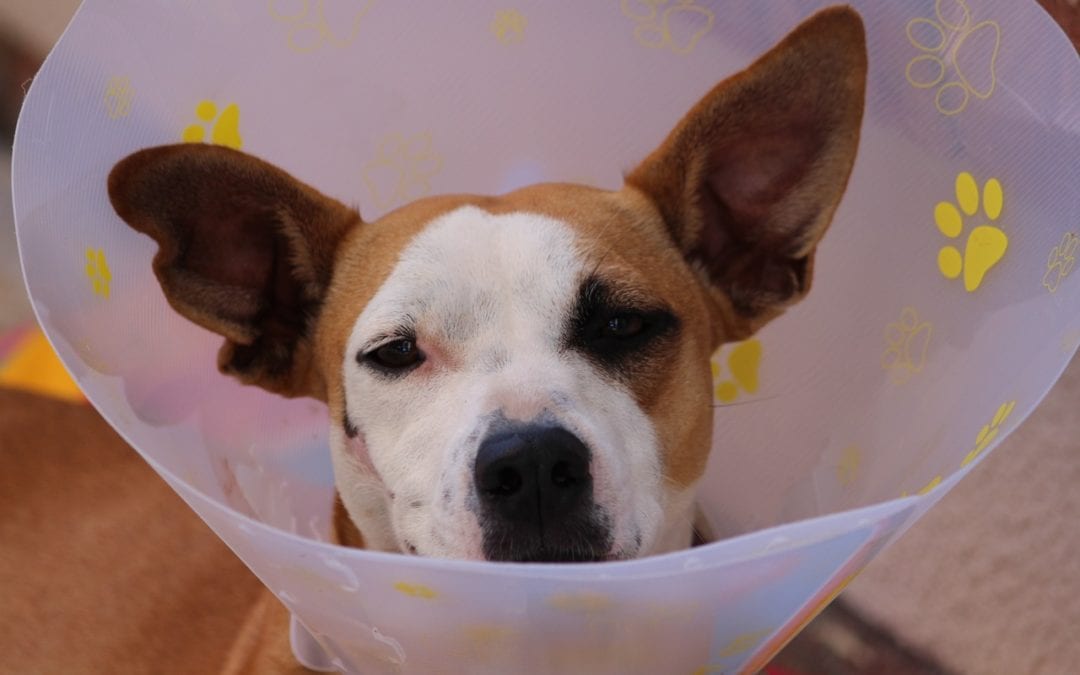For many pet owners, the most important service we offer is emergency or critical care when minutes matter. Routine wellness checks help to prevent illness or health risks from evolving into a health emergency. However, much of the time, a bona fide pet emergency has nothing to do with how healthy a pet is prior to emergency care. Your pet could choke, get hit by a moving vehicle, or become poisoned all within the blink of eye; while other pet emergencies show more subtle signs.
To best protect your pet, we’ll go through what a true pet emergency looks like, and how you can help your pet through it.
First: First Aid
One of the most important things you can have stowed away is a pet first-aid kit.
Having one and never needing it is better than the alternative, and should always have these items inside:
- Gauze
- Bandages
- Adhesive tape
- Antiseptic spray or wipes
- Antibiotic ointment
- Lubricant and thermometer
- Gel ice pack
- Tweezers
- Scissors
- Diphenhydramine
- Hydrogen peroxide
- Syringe
- Extra towels and clean cloth strips
It makes no sense to have a pet first aid kit and not know how to use it for small and more serious pet emergencies. We highly recommend brushing up on your application of pet first aid through the Red Cross or other local organization.
Be Prepared in Other Ways
In addition to your first aid kit, be prepared in other ways for a pet emergency. Have an address and phone number stored in your phone for your regular veterinarian, an after-hours emergency hospital, and the pet poison helpline. It can be difficult to know when symptoms constitute an emergency. If you’re not sure, call for help and advice as to whether you need to head to the emergency room or simply see your regular veterinarian.
If you do have a pet emergency, have your pet’s medical records available at any time. Apps like VitusVet let you keep your pet’s veterinary medical records on your smartphone 24/7.
Pet Poisons
There are countless items and ingredients considered toxic to pets. Taking advantage of pet poison awareness may save your pet’s life and reduce the need for emergency care. Should you need a trained toxicologist, call the Animal Poison Control 24-hour hotline at (888) 426-4435.
Now What?
Once your kit is in order and you have a good understanding of what to do should your pet ever fall ill or withstand an injury, the next step is understanding the signs of a pet emergency. If you ever notice these symptoms, it’s time to call us or bring your pet in:
- Pale gums
- Rapid or weak pulse
- Rapid breathing
- Difficulty standing or walking
- Change in body temperature (get out that good old thermometer)
- Can’t move
- Hard to wake
- Seizures
- Excessive bleeding
Please let us know immediately when you are dealing with a pet emergency. Every second can give us a better chance of delivering your pet’s best possible outcome.
CPR and the Heimlich Maneuver
When there is a full-fledged emergency, stabilize your pet before driving to us. Try to administer CPR if he or she isn’t breathing. This entails keeping your pet’s jaws closed tightly and blowing into the nostrils one time every three seconds. Between breaths, employ chest compressions on your pet’s heart for circulation.
If your pet is choking, try to dislodge whatever is blocking airflow, and if all else fails, try a sharp rap on his or her chest to force the object out.
If your pet is bleeding profusely from an open wound, apply direct pressure to the wound to slow bleeding. Please get someone to help you with this during transport if possible.
Handling A Pet Emergency
The ASPCA recommends approaching your sick or injured pet slowly in order to protect yourself from getting bitten or scratched. If your pet responds non-aggressively, try to transport him or her to our facility, after ruling out any spinal injuries that could become worse through travel. Please call us if you need step-by-step assistance.
We truly hope you and your family never have to deal with a pet emergency, but we are here for you should you ever need us. Let us know if you have any questions.

